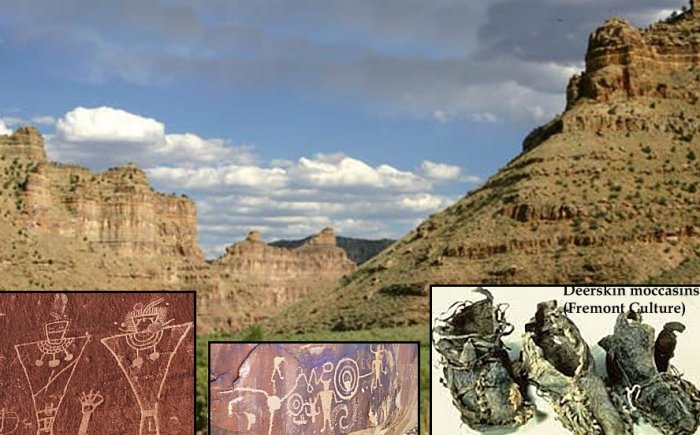Fremont Indians: Unique 2,500-Year-Old Forgotten Culture Of North America
A. Sutherland - AncientPages.com - About 2,500 years ago, a unique culture of Fremont Indians began to develop in Utah and parts of Nevada, Idaho, and Colorado.
The culture received its name from the Fremont River Valley, Utah, where these people lived and reached as far as Cedar City.
Their culture was first defined in 1931 by a young Harvard anthropology student, Noel Morss, who worked along the Fremont River in south-central Utah
Social Structure, Diet, And Challenging Life
The Fremont Indians often lived in rugged places but knew how to adapt to the environment. They were closely tied to nature and its changes, so they had to be flexible and adaptive to modify their way of life quickly.
Their social structure was probably composed of small, loosely organized bands or larger villages consisting of several families living in natural rock shelters and pit houses dug into the ground and covered with a brush roof.
They hunted with a bow and arrow and gathered and grew corn and beans. They also ate native plants such as pinyon nuts, rice grass, berries, bulbs, and tubers.
Artifacts That Distinguished The Fremont Indians From Others
Unlike the fiber sandals used by the Anasazi, the Fremont made moccasins from the lower-leg hide of large animals, such as deer, bighorn sheep, or bison.
Pilling Figurines, unfired clay Fremont figurines, on display in the College of Eastern Utah Prehistoric Museum. Image credit: Brian Lee (Markarian421) - CC BY-SA 3.0
Also, their basketry, the so-called "one-rod-and-bundle," was unique because the Fremont people used milkweed, willow, yucca, and other native fibers to make baskets.
Their tools, such as grinding stones, arrow points, and many others of this kind, were similar to those used by other tribes. Their pottery, however, was mostly gray wares with polished and very smooth surfaces or designs pinched into the clay.
Fremont pictographs and petroglyphs are famous. They depict trapezoidal figures with arms, legs, and fingers and are decorated with headdresses and necklaces; there are also animal-like figures such as deer, dogs, bighorn sheep, birds, snakes, and lizards.
About 1250 AD, artifacts of this unique culture began to disappear from the region. Among them are "one-rod-and-bundle basketry," thin-walled gray pottery, and curious small clay people figurines decorated with necklaces, ear bobs, clothing, hair, facial decorations, and anatomical decorations characteristics.
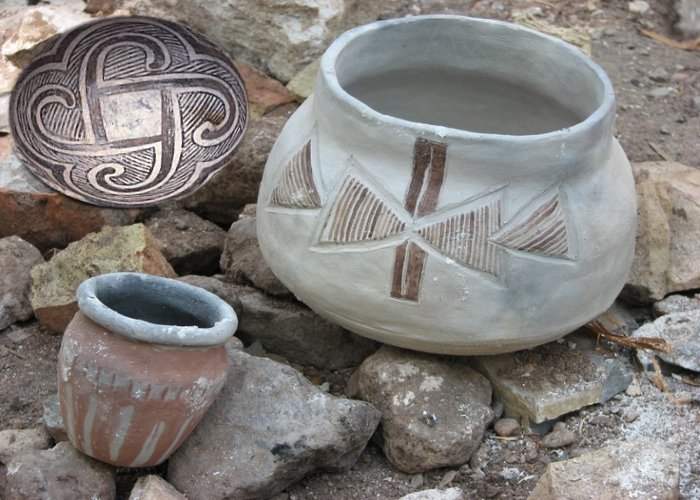 Fremont Indian's pottery State Park and Museum, Utah
Fremont Indian's pottery State Park and Museum, Utah
The purpose of the figurines is still unknown, but the researchers suggested the artifacts may be associated with fertility or the Fremont people's religious rituals.
Later, the Fremont Culture and its artifacts began to decline about 1150 AD and ceased to exist by AD 1300. New people moved into Fremont territory, but what happened to the Fremont Indians is not entirely explained.
Was climate change responsible? Or were they killed or forced to leave their homes and find another place to live?
Written by – A. Sutherland AncientPages.com Staff Writer
Updated on July 20, 2022
Copyright © AncientPages.com All rights reserved. This material may not be published, broadcast, rewritten or redistributed in whole or part without the express written permission of AncientPages.com
Expand for referencesMore From Ancient Pages
-
 Rare Artifacts Found In Nottingham’s Mysterious Caves On Display For The First Time
Archaeology | Feb 7, 2024
Rare Artifacts Found In Nottingham’s Mysterious Caves On Display For The First Time
Archaeology | Feb 7, 2024 -
 Discovery Of World’s Oldest Fortresses Reshapes Our Understanding Of Hunter–Gatherers
Archaeology | Dec 7, 2023
Discovery Of World’s Oldest Fortresses Reshapes Our Understanding Of Hunter–Gatherers
Archaeology | Dec 7, 2023 -
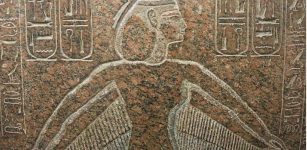 Nephthys – Egyptian Funerary Goddess Who Also Protected The Pharaohs While They Were Alive
Featured Stories | Aug 15, 2021
Nephthys – Egyptian Funerary Goddess Who Also Protected The Pharaohs While They Were Alive
Featured Stories | Aug 15, 2021 -
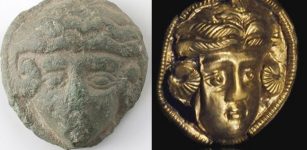 Unique Ancient Bronze Miniature Portraits Of Alexander The Great Found In Ringsted On The Island Of Zealand
Archaeology | Apr 11, 2024
Unique Ancient Bronze Miniature Portraits Of Alexander The Great Found In Ringsted On The Island Of Zealand
Archaeology | Apr 11, 2024 -
 Who Is Secretly Keeping A Watching Eye On Tibetan Monasteries?
Ancient Mysteries | May 14, 2019
Who Is Secretly Keeping A Watching Eye On Tibetan Monasteries?
Ancient Mysteries | May 14, 2019 -
 Mysterious Gold-Colored Chariot Washes Ashore In India – But Where Did It Come From?
News | May 12, 2022
Mysterious Gold-Colored Chariot Washes Ashore In India – But Where Did It Come From?
News | May 12, 2022 -
 Unique 9,000-Year-Old Shrine With Symbols Discovered At Neolithic Ritual Site In Jordan Desert
Archaeology | Mar 7, 2022
Unique 9,000-Year-Old Shrine With Symbols Discovered At Neolithic Ritual Site In Jordan Desert
Archaeology | Mar 7, 2022 -
 How Ramesses II Became The Greatest Pharaoh In Egypt
Featured Stories | Jun 6, 2021
How Ramesses II Became The Greatest Pharaoh In Egypt
Featured Stories | Jun 6, 2021 -
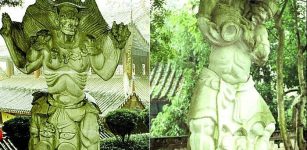 Spectacular Fengdu Ghost City Devoted To Afterlife
Chinese Mythology | Aug 22, 2016
Spectacular Fengdu Ghost City Devoted To Afterlife
Chinese Mythology | Aug 22, 2016 -
 4,000-Year-Old Stonehenge Of The Netherlands Reveals Its Secrets
Archaeology | Jun 22, 2023
4,000-Year-Old Stonehenge Of The Netherlands Reveals Its Secrets
Archaeology | Jun 22, 2023 -
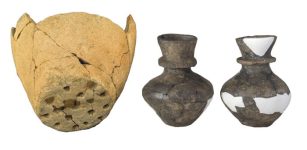 Neolithic Ceramics Reveal Dairy Processing From Milk Of Multiple Species
Archaeology | Mar 15, 2023
Neolithic Ceramics Reveal Dairy Processing From Milk Of Multiple Species
Archaeology | Mar 15, 2023 -
 On This Day In History: Battle Of Rudau Was Fought – On Feb 17, 1370
News | Feb 17, 2017
On This Day In History: Battle Of Rudau Was Fought – On Feb 17, 1370
News | Feb 17, 2017 -
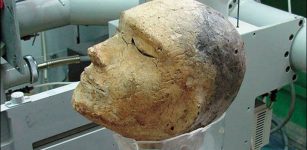 Mystery Of Unique 2,100-Year-Old Human Clay Head With A Ram’s Skull Inside
Archaeology | Apr 18, 2020
Mystery Of Unique 2,100-Year-Old Human Clay Head With A Ram’s Skull Inside
Archaeology | Apr 18, 2020 -
 Remains Of Ancient Predators Shed Light On How Humans Did Or Didn’t Find Food
Archaeology | May 2, 2022
Remains Of Ancient Predators Shed Light On How Humans Did Or Didn’t Find Food
Archaeology | May 2, 2022 -
 1,200-Year-Old Viking Sword Found By Hiker In Norway
Archaeology | Oct 22, 2015
1,200-Year-Old Viking Sword Found By Hiker In Norway
Archaeology | Oct 22, 2015 -
 On This Day In History: The Battle Of Fulford Was Fought – On Sep 20, 1066 AD
News | Sep 20, 2015
On This Day In History: The Battle Of Fulford Was Fought – On Sep 20, 1066 AD
News | Sep 20, 2015 -
 ‘Sesselfelsgrotte Cave’ – Innovative Neanderthals Adjusted To Climate Change By Creating More Complex Tools
Artifacts | Aug 31, 2020
‘Sesselfelsgrotte Cave’ – Innovative Neanderthals Adjusted To Climate Change By Creating More Complex Tools
Artifacts | Aug 31, 2020 -
 Ancient DNA Sheds New Light On Easter Island Mystery
Archaeology | Oct 13, 2017
Ancient DNA Sheds New Light On Easter Island Mystery
Archaeology | Oct 13, 2017 -
 Graveyards Of Ancient British And French Giants Revealed In Old Documents And Journals
Ancient Mysteries | Jul 4, 2020
Graveyards Of Ancient British And French Giants Revealed In Old Documents And Journals
Ancient Mysteries | Jul 4, 2020 -
 Newly Discovered Papyrus Reveals An Intriguing And Gripping Criminal Case From The Roman Empire
Archaeology | Jan 29, 2025
Newly Discovered Papyrus Reveals An Intriguing And Gripping Criminal Case From The Roman Empire
Archaeology | Jan 29, 2025

